Setting the Stage: Bank of America Amidst Geopolitical Crosscurrents
In the complex world of global finance, major institutions like Bank of America find themselves constantly navigating a shifting landscape of economic forces, regulatory demands, and, increasingly, geopolitical events. The ongoing crisis in Ukraine, triggered by Russia’s full-scale invasion, has presented a significant challenge, demanding responses on multiple fronts – from humanitarian aid to risk management and forward-looking economic discussions. When we examine Bank of America Ukraine’s connection to this crisis, we find a multifaceted picture, revealing both immediate corporate social responsibility actions and historical financial ties that have drawn attention.
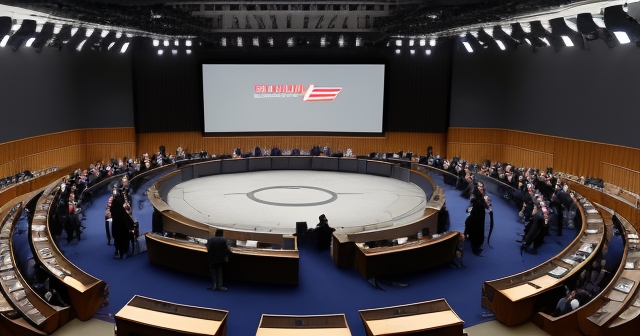
Understanding the interplay between global banks and international conflicts is crucial for anyone involved in financial markets, whether you are a seasoned trader or just beginning your investment journey. These events can dramatically impact market stability, currency values, commodity prices, and the overall risk perception of different regions. Our goal here is to dissect Bank of America’s various touchpoints with the Ukraine crisis, providing you with a clearer picture drawn from available information, helping you grasp the complexities that major financial players face and the wider implications for the financial ecosystem.
- This exploration will highlight the humanitarian aid provided by Bank of America.
- We will discuss the bank’s engagement in high-level international discussions.
- An analysis of past financial flows in relation to geopolitical events will be presented.
We will explore the different facets of Bank of America’s involvement, starting with their direct support for those affected by the conflict, moving through their high-level engagements regarding Ukraine’s future, and delving into the sometimes-controversial details of past financial flows. We’ll also look at the bank’s stated strategy regarding its exposure to Russia and bring in expert analysis connected to the bank’s network to understand the economic pressures within Russia itself. This comprehensive view aims to provide you with an EEAT-compliant (Experience, Expertise, Authority, Trust) understanding of a major financial institution’s role in a global crisis.
A Pillar of Support: Bank of America’s Humanitarian Response
Amidst the devastating human cost of the conflict, global corporations often step forward to provide humanitarian assistance. Bank of America has been one such entity, committing significant resources to aid efforts in Ukraine and the surrounding region. This immediate response is a key aspect of corporate social responsibility, demonstrating a commitment to global citizenship beyond purely financial motives. It’s a tangible way for institutions to contribute to relief during a crisis.
Specifically, Bank of America announced a substantial initial commitment of funds aimed directly at providing essential support to those displaced and affected by the fighting. This wasn’t just a general promise; the bank designated $1 million in immediate funding to a select group of established and highly respected humanitarian organizations known for their on-the-ground work in crisis zones. These organizations include:
- The Red Cross and its global network (including the Red Crescent societies), which are often first responders, providing emergency relief, medical care, and support for displaced populations.
- CARE (Cooperative for Assistance and Relief Everywhere), known for its focus on delivering aid to vulnerable populations, particularly women and children, providing food, shelter, and health services.
- International Medical Corps, which specializes in providing medical relief and training to healthcare workers in conflict-affected areas, ensuring access to essential medical services.
- World Central Kitchen, founded by Chef José Andrés, renowned for providing meals to people in disaster and crisis zones, offering nourishment and a sense of normalcy in chaotic situations.
- Project Hope, a global health organization that focuses on delivering essential medicines and medical supplies, training healthcare workers, and providing humanitarian medical assistance.
| Humanitarian Organization | Focus of Aid |
|---|---|
| The Red Cross | Emergency relief and medical care |
| CARE | Support for vulnerable populations |
| International Medical Corps | Medical relief and healthcare worker training |
| World Central Kitchen | Providing meals in disaster zones |
| Project Hope | Health services and medical assistance |
By channeling funds through these experienced organizations, Bank of America ensured that their financial contribution would be utilized effectively and reach those most in need. This strategic approach leverages the logistical capabilities and expertise of dedicated aid groups, maximizing the impact of the donation. For a global financial institution, this level of direct and focused aid is a critical component of responding responsibly to a major humanitarian crisis.
Beyond Direct Aid: The Ripple Effect of Employee Engagement
Corporate support during a crisis isn’t solely about institutional donations; it also involves mobilizing the energy and generosity of employees. Bank of America recognizes this, and their response to the Ukraine crisis included activating mechanisms to facilitate employee contributions and magnify their impact. This isn’t just good internal relations; it’s a way to align the personal values of their workforce with the corporation’s stated mission and values.
A significant tool in this effort is Bank of America’s global matching gift program. This program allows employees to donate to eligible charitable organizations, and the bank will match those donations up to a certain limit per employee per year. For the Ukraine relief efforts, this program was specifically highlighted and encouraged, allowing employees who felt moved by the crisis to contribute financially and have their personal donations doubled by the company.
| Matching Gift Program Details | Amount Matched |
|---|---|
| Maximum Contribution Per Employee | $5,000 |
| Eligible Charitable Organizations | Must meet Bank of America’s criteria |
| Encouragement for Ukraine Relief | Active promotion among employees |
The program matches employee donations up to $5,000 per calendar year. By applying this matching program to organizations providing Ukraine relief, Bank of America created a powerful incentive for their thousands of employees worldwide to contribute. Imagine the collective impact when numerous employees donate, knowing their contribution is effectively doubled. This not only increases the total amount of aid reaching Ukraine but also fosters a sense of shared purpose and engagement among the bank’s staff regarding the global situation.
This approach underscores a broader theme in corporate social responsibility: empowering individuals within the organization to make a difference. It moves beyond a top-down directive and becomes a collaborative effort involving the entire corporate community. For investors and the public, observing a company’s commitment to enabling employee philanthropy provides insight into its corporate culture and values – aspects that are increasingly considered important when evaluating a company’s overall standing and long-term sustainability.
Engaging Leadership: Discussions on Ukraine’s Future Needs
While immediate humanitarian aid addresses the urgent needs of the present, addressing the long-term consequences of the conflict requires forward-looking engagement. Global financial institutions, with their vast networks and expertise, are often involved in discussions about economic recovery and reconstruction. Bank of America has also demonstrated engagement at this higher level, specifically concerning Ukraine’s critical post-war economic challenges.
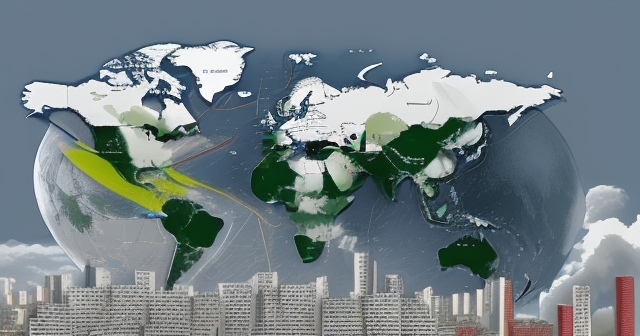
A notable instance of this forward-looking engagement was the planned meeting between Ukraine’s President Volodymyr Zelenskiy and Bank of America executives. This meeting was scheduled to take place at Bank of America’s headquarters in New York City. The very fact that a head of state from a nation embroiled in conflict would meet with leadership from a major global bank underscores the potential role financial institutions can play not just during a crisis but in its aftermath.
Among the executives President Zelenskiy was scheduled to meet was Bernard Mensah, who serves as the President of International Operations for Bank of America. This detail is significant because it indicates the conversation would focus on the bank’s global perspective and its capacity to potentially assist or engage with Ukraine on an international scale, rather than solely through domestic U.S. operations.
The primary focus of this high-level discussion was Ukraine’s urgent energy needs post-war. The conflict has severely damaged Ukraine’s energy infrastructure, posing a significant threat to its ability to function, rebuild, and provide for its citizens. Discussions with major financial players like Bank of America could involve exploring potential financing mechanisms for energy sector reconstruction, attracting investment, or providing advisory services on rebuilding a resilient energy system. This kind of engagement moves from reactive aid to proactive strategic planning for recovery, highlighting the diverse ways a bank like Bank of America can be connected to the unfolding situation in Ukraine.
Unpacking Pre-Invasion Flows: Cash Shipments Under Scrutiny
While Bank of America’s humanitarian efforts and discussions on future recovery demonstrate positive engagement, other connections to the region, particularly regarding Russia, have drawn scrutiny. Financial institutions operate globally, and their activities, even those that were legal at the time, can be viewed differently in the context of subsequent geopolitical events. One specific area that has come under public attention involves the flow of cash into Russia in the period immediately preceding the full-scale invasion of Ukraine in February 2022.
Investigations drawing on trade data have revealed that Bank of America was among a limited number of Western financial institutions involved in shipping substantial volumes of cash to Russia in the weeks leading up to the invasion. This was not an isolated transfer but part of larger, pre-existing financial relationships. According to reports based on data from sources like Import Genius, Bank of America was one of three key Western institutions, alongside Raiffeisen Bank International (RBI) and Brink’s Company (a global security and logistics firm often used for transporting valuables), that collectively shipped over $12 billion in physical cash to Russia just before the conflict escalated dramatically.
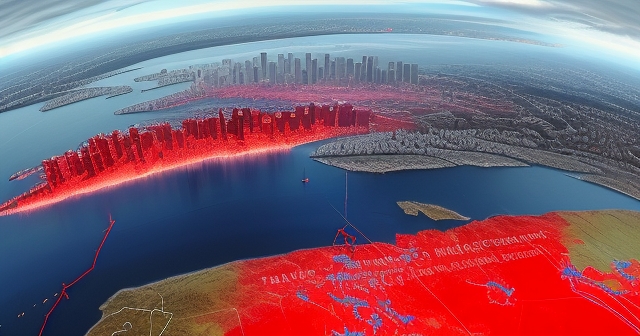
The data indicates that Bank of America specifically shipped U.S. dollars from the United States to Russia during this critical pre-invasion window. While other institutions might have shipped euros or Swiss francs, BofA’s involvement was in the movement of the world’s primary reserve currency directly from the U.S. to Russia. This fact is significant because it illustrates the scale of capital movement occurring even as geopolitical tensions were clearly mounting. The shipments were received by entities within Russia, including TBSS (Tekhno-Bank Service Ltd), a Moscow-based financial services company that would later be targeted by U.S. sanctions *after* the invasion.
The sheer volume of $12 billion in cash moved by just three institutions in a short period before a major conflict highlights the deep financial integration that existed and the significant liquidity that was being transferred into Russia. For traders and financial analysts, understanding these flows can be part of identifying potential areas of risk or market instability leading up to major geopolitical shifts.
Legality vs. Perception: Navigating the Pre-Sanction Landscape
It is absolutely crucial to contextualize the information regarding the cash shipments to Russia. While the volume and timing are striking in retrospect, it is important to understand the legal and regulatory environment *at the moment these shipments occurred*. The reports analyzing this data explicitly state that these cash shipments were entirely legal at the time they took place.
Major, widespread sanctions targeting Russia’s financial system, including restrictions on currency exports and financial transactions, were primarily imposed *after* the full-scale invasion began in late February 2022. The coordinated sanctions efforts by the U.S., the European Union, the UK, and other nations fundamentally changed the legal landscape for financial interactions with Russia. Before these comprehensive measures were in place, the movement of currency for legitimate business purposes, such as replenishing bank branches, funding local operations, or facilitating trade, was standard practice and permitted under existing regulations.
Therefore, while the timing appears highly sensitive with the benefit of hindsight, Bank of America, along with other banks involved, was operating within the bounds of the law at the moment of these transfers. Banks routinely move large amounts of physical cash globally to meet the needs of their clients and operations in various countries. This was part of the routine flow of international finance before the door was slammed shut by sanctions.
| Cash Shipment Details | Amount Moved |
|---|---|
| Bank of America Involvement | $12 billion |
| Period of Cash Transfer | Pre-Invasion of Ukraine |
| Received by | Entities within Russia |
However, the data still raises legitimate questions about risk assessment and perception. In a period of escalating geopolitical tension, were the risks of continuing such significant cash flows adequately assessed? How do financial institutions balance routine business operations with the foresight required to anticipate potential disruptions from political events? While legal compliance is paramount, the optics of such large transfers just before an invasion highlight the delicate position global banks occupy and the challenges of navigating the grey areas before formal restrictions are enacted. For investors, this situation underscores the importance of considering geopolitical risk alongside traditional financial analysis.
A Strategic Shift: Bank of America’s Evolving Russian Footprint
Beyond the specific pre-invasion cash flows, it’s also important to understand Bank of America’s broader and longer-term strategy regarding its presence and exposure in Russia. The bank has publicly stated that it has been strategically reducing its business and financial footprint in Russia for many years, well before the 2022 invasion. This wasn’t a sudden reaction to the full-scale conflict but rather a more gradual process reflecting a changing risk appetite or strategic focus.
According to Bank of America’s statements, they have significantly curtailed their business activities in Russia since the initial events of 2014, which included Russia’s annexation of Crimea and support for separatists in eastern Ukraine. This period marked a turning point for many Western businesses and financial institutions in re-evaluating the risks associated with operating in Russia due to increased political instability and the imposition of earlier, albeit less comprehensive, sanctions.
Reducing a bank’s footprint in a country typically involves several actions:
- Scaling back or exiting lending activities to Russian entities.
- Reducing trading activities with Russian counterparties.
- Closing down local representative offices or subsidiaries.
- Minimizing cross-border transactions not related to essential wind-down activities.
- Reducing financial exposure – meaning the total amount of money or assets potentially at risk from local economic or political instability.
| Actions to Reduce Footprint | Description |
|---|---|
| Scaling Back Lending | Reducing loans to Russian entities |
| Reducing Trading Activities | Less interaction with Russian counterparties |
| Closing Offices | Shuttering local operations |
| Minimizing Transactions | Limiting non-essential cross-border activities |
| Reducing Financial Exposure | Lowering at-risk capital in Russia |
Bank of America’s assertion is that they had been actively engaged in this process for eight years leading up to the 2022 invasion.
This long-term strategy suggests a proactive approach to risk management in a region perceived as increasingly volatile. While the 2022 invasion certainly accelerated the departure of many Western firms, BofA’s claim is that they were already on a path of de-risking. This historical context is important for evaluating the bank’s overall risk management framework and its response to geopolitical shifts over time. For investors analyzing the bank’s stability, understanding this long-term strategic withdrawal provides a layer of insight into how management assesses and mitigates country-specific risks.
Adherence and Absence: BofA’s Current Stance on Russia
Following the imposition of sweeping international sanctions in the wake of the February 2022 invasion, the landscape for financial institutions operating in or with Russia changed dramatically. Bank of America’s stated position is that they have fully complied with all sanctions and required disclosures from relevant authorities, including the U.S. Treasury and international bodies. Compliance with sanctions is not optional for global financial institutions; it is a fundamental legal and operational requirement with severe penalties for non-compliance.
Beyond mere compliance, Bank of America has stated that their current business activities and financial exposure in Russia are minimal to virtually non-existent. This aligns with their stated strategy of reducing their footprint since 2014 and reflects the reality that operating in Russia under the current sanctions regime is extremely difficult, if not impossible, for most Western financial firms.
What does “virtually no financial exposure or business activities” mean in practical terms? It implies that the bank has either successfully exited most, if not all, of its previous operations, wound down credit lines, sold or written off assets tied to Russia, and ceased offering most financial services to Russian clients or engaging in significant transactions with Russian entities. Any remaining activities would likely be limited to necessary administrative tasks related to the wind-down process or potentially minimal legacy exposures being managed towards resolution.
This stated position is crucial for Bank of America’s reputation and its ability to operate globally, particularly in Western markets that have imposed these sanctions. Maintaining trust with regulators, governments, and the public requires demonstrating a clear break from activities that could be seen as supporting the Russian economy under the current circumstances. For traders and investors, understanding a major bank’s level of exposure to sanctioned countries is vital risk information, as it can impact the bank’s stability and future profitability.
An Inside Look: Analyzing Russia’s War Economy
To gain a deeper understanding of the financial pressures within Russia, which are intrinsically linked to the global financial system’s response, it is valuable to consider analysis from experts with insight into both Russia and the financial world. One such perspective comes from Craig Kennedy, a former vice chairman at Bank of America Merrill Lynch (the investment banking division of Bank of America).
Kennedy, who is now a fellow at Harvard’s Davis Center for Russian and Eurasian Studies and publishes analysis on his Substack titled “Navigating Russia,” has provided detailed insights into how Russia is funding its war effort despite extensive international sanctions. His analysis goes beyond simple observations of GDP or inflation and delves into the structural mechanisms the Russian state is allegedly using to channel funds towards its military and defense industries.
According to Kennedy’s analysis, Russia has developed a complex and opaque system of “off-budget” financing for its war economy. This means a significant portion of military spending is not transparently accounted for in the official state budget, making it difficult for external observers to track the true cost of the war. A key component of this off-budget scheme, as highlighted by Kennedy, involves the use of compulsory bank loans.
In this system, Russian banks, particularly state-owned or state-influenced institutions, are allegedly pressured or effectively compelled by the government to extend credit to state-owned defense contractors and other entities involved in the war effort. These loans may be extended on non-commercial terms, potentially to borrowers who would not be considered creditworthy under normal market conditions. This mechanism effectively forces the banking sector to bear the financial burden of supporting military production, circumventing more traditional or transparent methods of government financing.
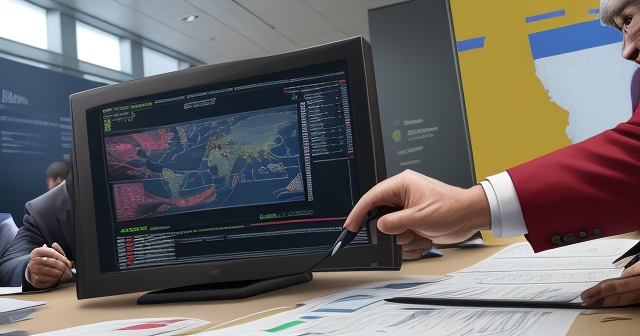
Kennedy’s perspective, coming from someone with high-level experience in global finance and expertise in Russia, adds a layer of authority and depth to the understanding of the financial dimension of the conflict. It moves beyond simply noting that Russia is under sanctions to explaining *how* it is attempting to sustain its war economy and the potential financial risks inherent in that strategy.
The Shadow of a Credit Crisis: Implications of Russia’s Financial Scheme
Craig Kennedy’s analysis of Russia’s off-budget financing scheme, particularly the reliance on compulsory bank loans to defense contractors, points to a significant potential risk within the Russian financial system: the increasing possibility of a systemic credit crisis. Understanding this risk is vital for anyone trying to gauge the long-term economic stability of Russia and the potential knock-on effects globally.
A credit crisis occurs when there is a widespread inability or unwillingness of borrowers to repay debts, leading to losses for lenders (banks) and a general tightening of credit availability throughout the economy. In Russia’s case, Kennedy argues that forcing banks to lend heavily to defense contractors, who may be prioritizing military output over profitability or even solvency, creates a large pool of potentially distressed or non-performing loans on the banks’ balance sheets.
If these defense contractors struggle or fail to repay the compulsory loans, the losses accrue to the banks. As the volume of such loans grows, it can weaken the entire banking sector, eroding capital and potentially leading to a crisis of confidence. Banks might become hesitant to lend to other sectors of the economy (even healthy ones), further stifling economic activity. This creates a vicious cycle where economic slowdown makes it even harder for borrowers to repay, exacerbating the crisis.
Kennedy suggests this scheme is creating a hidden vulnerability, a “secret fiscal scheme hiding in plain sight” within the banking system, that could pose a significant threat to Russia’s economic stability down the line. Unlike a sovereign debt crisis (where the government defaults), a credit crisis centered in the banks could freeze up the internal financial plumbing of the economy, impacting businesses and individuals alike.
For sophisticated investors and analysts, understanding these structural weaknesses within Russia’s financial system, as illuminated by experts like Kennedy (with his background linked to institutions like Bank of America Merrill Lynch), provides critical context. It suggests that even if Russia appears resilient in the short term due to high energy prices, underlying financial instability could emerge as a major factor influencing its long-term capacity and potentially the trajectory of the conflict or future negotiations.
Connecting the Dots: Global Geopolitics, Financial Markets, and Your Trading Strategy
The journey we’ve taken, exploring Bank of America’s various connections to the Ukraine crisis – from humanitarian aid and high-level talks to analyzing past financial flows and peering into the potential instability of Russia’s war economy – underscores a fundamental truth for anyone participating in financial markets: global events, particularly geopolitical conflicts, are not isolated incidents. They have profound and complex impacts that ripple through the financial system, affecting everything from major banking operations to the price of currency pairs you might trade.
For you, whether you’re just starting out in investment or actively trading using technical analysis, understanding this interconnectedness is not just academic; it’s essential for informed decision-making. Geopolitical risk, as exemplified by the Ukraine crisis, directly influences market volatility, alters supply chains, triggers sanctions that redirect capital flows, and impacts the perceived strength or weakness of different economies and currencies. For example, events in Eastern Europe can directly affect the value of the Euro versus the US Dollar (EUR/USD), influence commodity prices like oil and gas, and cause significant swings in stock market indices.
Analyzing situations like Bank of America’s navigation of the Ukraine crisis helps us see how global institutions react and adapt, providing clues about broader market sentiment and potential areas of risk or opportunity. It highlights the importance of staying informed about global events and integrating fundamental analysis (understanding the underlying economic and political factors) with technical analysis (studying price charts and patterns). The ability to react quickly to news and understand its potential market impact is crucial.
If you are looking to apply your understanding of these global dynamics to trading, particularly in markets like Forex or other CFD instruments that are highly sensitive to geopolitical shifts, having a robust and reliable trading platform is non-negotiable. These markets require fast execution, access to real-time data, and a wide range of instruments to trade your analysis.
If you’re considering starting foreign exchange trading or exploring a wider range of CFD products, then Moneta Markets is a platform worth considering. Based in Australia, it offers over 1000 financial instruments, providing suitable choices for both beginners and experienced traders.
Choosing the right platform is a critical step in your trading journey. It’s where your analysis translates into action. A platform’s technical capabilities, the range of markets available, and the security of your funds are all paramount considerations, especially when trading volatile instruments influenced by global events.
When choosing a trading platform, Moneta Markets‘ flexibility and technological advantages are noteworthy. It supports popular platforms like MT4, MT5, and Pro Trader, combining high-speed execution with low spread settings to provide a good trading experience.
Finally, ensuring your funds are secure and your broker operates under stringent regulations is vital. This provides peace of mind, allowing you to focus on your trading strategy, informed by your understanding of the global financial landscape and events like those we’ve discussed concerning Bank of America Ukraine and Russia.
Conclusion: Balancing Responsibility, Risk, and Future Potential
Our exploration into Bank of America’s multifaceted connections to the Ukraine crisis reveals the complex challenges faced by major global financial institutions in an interconnected world. We have seen how the bank has responded with direct humanitarian aid, a clear demonstration of corporate social responsibility and a commitment to supporting those affected by the conflict. We also examined their engagement in high-level discussions aimed at addressing Ukraine’s crucial long-term needs, such as the energy sector crisis, suggesting a potential role in future recovery and reconstruction efforts.
Simultaneously, we delved into the historical context of pre-invasion financial flows, scrutinizing the scale of cash shipments to Russia in the period leading up to the conflict’s escalation. While acknowledging that these activities were legal at the time, their timing highlights the inherent difficulties in managing risk and perception during periods of escalating geopolitical tension before formal sanctions are implemented. This analysis was balanced by understanding Bank of America’s stated long-term strategy of reducing its Russian exposure since 2014 and its current position of having virtually no significant business or financial ties to the country, emphasizing its adherence to the post-invasion sanctions regime.
Furthermore, we incorporated expert analysis, like that provided by former BofA executive Craig Kennedy, offering a deeper look into the structural vulnerabilities within Russia’s economy resulting from its methods of war financing. This perspective adds another layer to the understanding of the economic consequences flowing from the conflict and the potential for future instability within Russia itself – a factor that can indirectly impact global markets and financial institutions.
For you, as an investor or trader, this case study of Bank of America Ukraine’s various involvements serves as a powerful reminder of how deeply intertwined global finance and geopolitics are. It underscores the necessity of adopting a comprehensive approach to market analysis that considers not just technical indicators but also fundamental economic and political factors, including the actions and exposures of major financial players. Navigating the complexities of the global financial landscape requires continuous learning, informed decision-making, and access to reliable tools and information.
As the situation in Ukraine continues to evolve, major financial institutions will continue to play a role, whether through ongoing humanitarian efforts, potential involvement in reconstruction finance, or simply by managing the lingering risks and complying with the established financial barriers. For those seeking to navigate the markets impacted by such events, staying informed about these dynamics is key to developing resilient trading strategies and achieving your financial goals.
bank of america ukraineFAQ
Q:What is Bank of America’s response to the Ukraine crisis?
A:Bank of America has committed significant resources for humanitarian aid, including a $1 million donation to established humanitarian organizations assisting those affected by the conflict.
Q:How does Bank of America’s employee engagement program relate to its humanitarian efforts?
A:Bank of America has a global matching gift program that encourages employees to donate to eligible charities, which the bank will match up to $5,000, effectively doubling employee contributions towards Ukraine relief efforts.
Q:What is the status of Bank of America’s operations in Russia post-sanctions?
A:Bank of America has stated that it has virtually no financial exposure or business activities in Russia, fully complying with all sanctions imposed following the invasion of Ukraine.
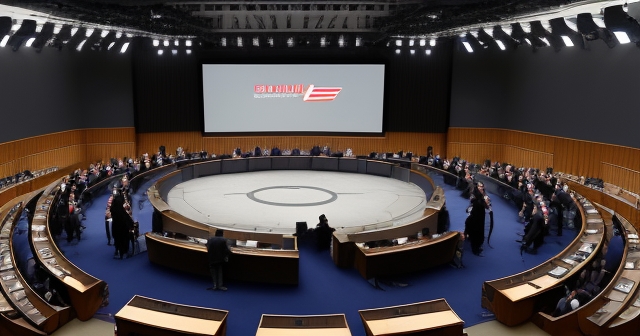
留言